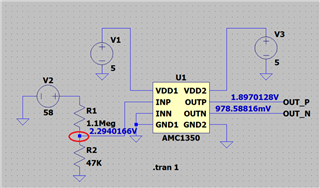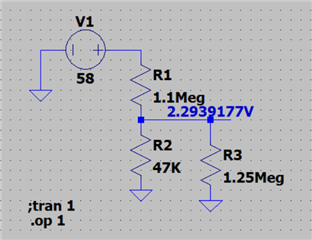newbe_always
New Member
Dear Team,
I am using AMC1350 in one of my application. Please see the below circuit.
You can see that the voltage at the input of AMC1350 is 2.294V

The expected voltage at the input of AMC1350 is 2.3766V

I believe the loss of voltage at the input of AMC1350 is due to it's input impedance of 1.25Mega ohm.
I put a resistor of value 1.25Mega ohm in parallel with R2 and obtained a value of 2.294V.

May I know any method to avoid this loss.
I am using AMC1350 in one of my application. Please see the below circuit.
You can see that the voltage at the input of AMC1350 is 2.294V

The expected voltage at the input of AMC1350 is 2.3766V

I believe the loss of voltage at the input of AMC1350 is due to it's input impedance of 1.25Mega ohm.
I put a resistor of value 1.25Mega ohm in parallel with R2 and obtained a value of 2.294V.

May I know any method to avoid this loss.

